Frisbees, Graham’s Number & My Statement of Faith

“I will never forget the moment I pulled off onto the shoulder of a Pennsylvania road and sat scribbling down words that came to me . . . out of nowhere. It wasn’t exactly a poem that I wrote, but more of a responsive litany and it came up from my depths. Two weeks later, I presented it to the Presbytery sub-committee and was immediately confronted with backlash from that mostly white, male group. Donegal Presbytery was known for being conservative and provincial, but I was in no way prepared for the harsh reaction to what I had written. No one had ever presented a Statement of Faith as a poem or responsive reading, and the sub-committee members’ primary concerns were that this particular format, along with the small detail that I was a young, young woman, would elicit up too much resistance and that I would be rejected as a candidate for ordination.”—Rev. Robin White
Wing + Prayer
By The Reverend Robin White
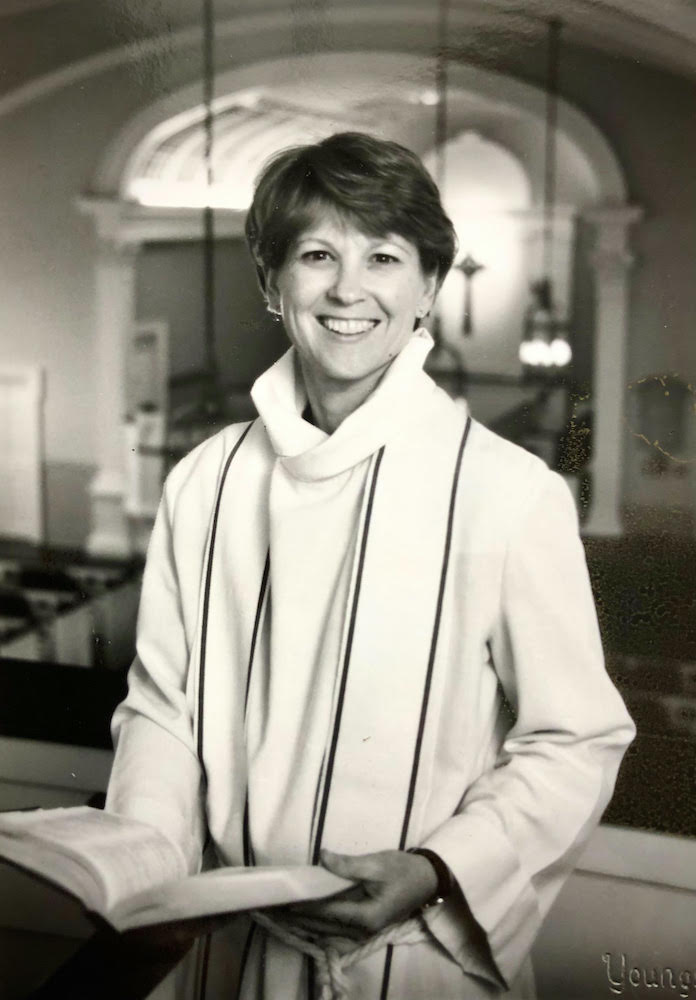
“Lighthouses don’t go running all over an island looking for boats to save; they just stand there shining.”―Anne Lamott
“Graham’s number is bigger than the googolplex. It’s so big, the Universe does not contain enough stuff on which to write its digits: it’s literally too big to write. But this number is finite, it’s also a whole number, and despite it being so mind-bogglingly huge we know it is divisible by 3 and ends in a 7.”― Rachel Thomas and Marianne Freiberger

PENDLETON South Carolina—(Hubris)—March 2024—In 1986, as someone seeking ordination as minister of word and sacrament in the Presbyterian Church (USA), I was required to write a “Statement of Faith,” which I would need to present to a sub-committee of Donegal Presbytery and then to the entire Presbytery (made up of ordained ministers and elders in that particular geographical region of Pennsylvania) for approval.
At the time, I was just 25, and even after three years of theological seminary, still very, very uncertain about what I believed.
I was resistant to dogma and, quite honestly, hesitant to “define my faith,” knowing full well that whatever I believed on any given day, might and probably would be revised on the next.
That I embodied a faith that was ever-changing was the one thing I could be certain of.
I will never forget the moment I pulled off onto the shoulder of a Pennsylvania road and sat scribbling down words that came to me . . . out of nowhere. It wasn’t exactly a poem that I wrote, but more of a responsive litany and it came up from my depths.
Two weeks later, I presented it to the Presbytery sub-committee and was immediately confronted with backlash from that mostly white, male group. Donegal Presbytery was known for being conservative and provincial, but I was in no way prepared for the harsh reaction to what I had written.
No one had ever presented a Statement of Faith as a poem or responsive reading, and the sub-committee members’ primary concerns were that this particular “format,” along with the small detail that I was a young, young woman, would elicit up too much resistance and that I would be rejected as a candidate for ordination.
Oh, and they also wanted me to add a section about the crucifixion of Jesus and God’s forgiveness of our sins—“bathed in Christ’s blood” kind of stuff . . . .
I asserted that they had wanted me to write a statement about what I believed, and that I had done that. I said I would try to tweak it a bit, but that I wanted to go forth with the document I had created.
Three weeks later, this is what I presented to a couple hundred, white, mostly male examiners.
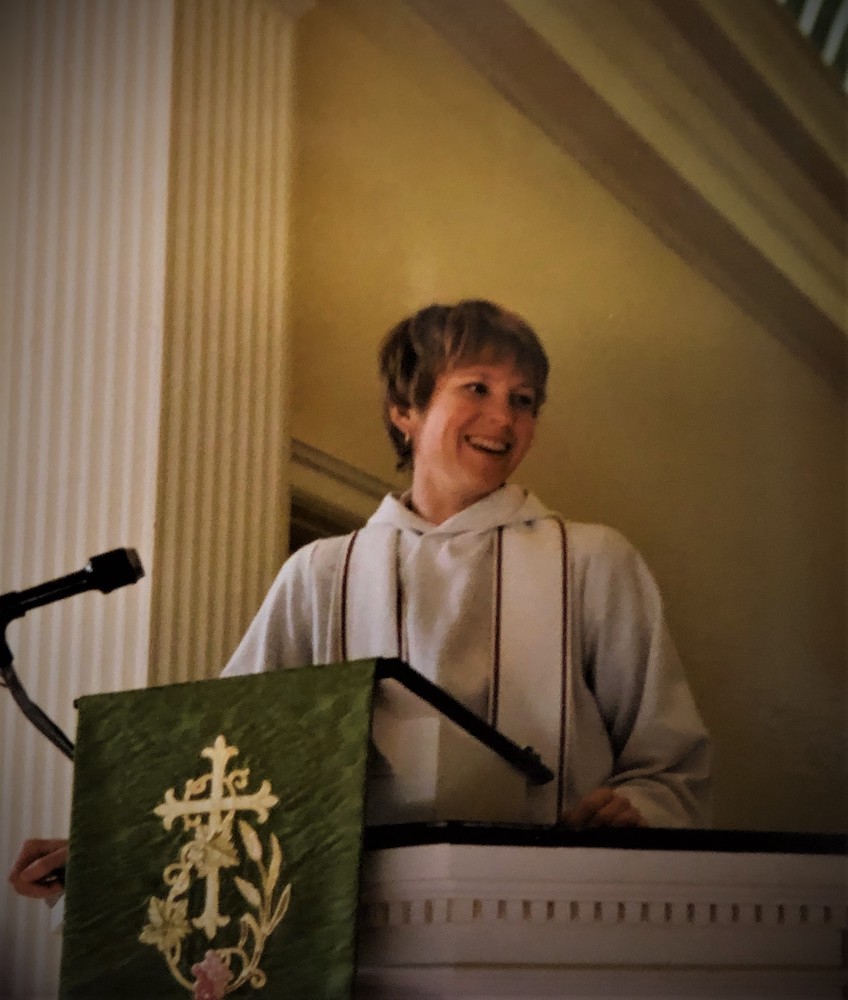
Statement of Faith, 1986, By Rev. Robin K. White
One: And God said . . . and there was.
All: From darkness, there was light; from silence, there was sound; from stillness, there was life.
One: And God said . . . and there was. And God said . . .
All: . . . let us make humankind, in our image, after our likeness.
One: . . . and there was. And God said . . .
All: . . . but we would not listen.
One: God spoke love . . .
All: . . . but we would not listen.
One: God spoke faithfulness . . .
All: . . . but we would not listen.
One: God spoke life . . .
All: . . . but we would not listen.
One: And God said,
All: I will speak by doing; my words will be deeds; I will give myself.
One: And God spoke Jesus. And Jesus said, I love you . . .
All: . . . and Jesus showed us how to listen, and he showed us how to love, and he showed us how to live, but we would not listen.
One: And Jesus said, it is finished.
All: As he died on the cross, he reconciled us to the God of Love.
One: And God said, Life!
All: . . . and there was, and there is, and there always will be.
One: And God said receive the Holy Spirit.
All: Through the voice of the Spirit, we hear God’s love; and as the Church, we are one, the community of love, called to respond to that which we know; through our words and our deeds, seeking justice and love.
One: And God said . . .
All: . . . and there was, and there is: it is Love.
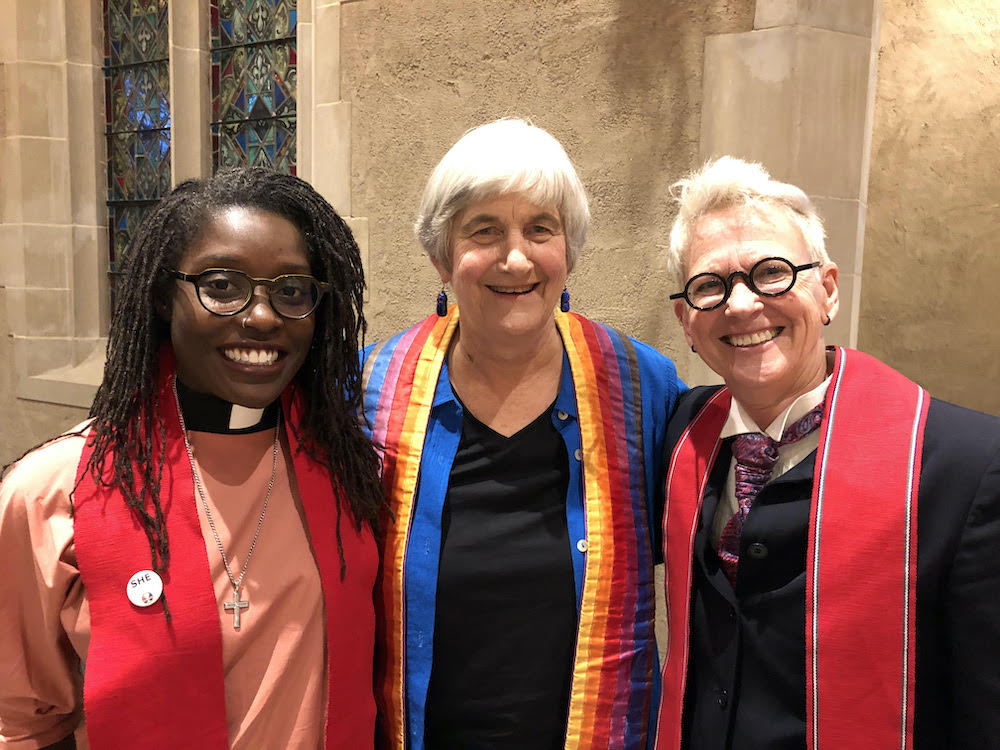
What happened next, I am at a loss to describe. After one question from the floor about the meaning of “the quick and the dead” from the Apostles’ Creed (seriously?), they sent me out so they could discuss and vote on my readiness for ministry.
I stood on the sidewalk outside the sanctuary, watching through the windows while they debated—no, argued with, squabbled, and literally shouted at one another. As I watched, I fully expected to see hymnals and pew Bibles hurled through the air. For 45 minutes, this went on. Then, feeling doomed, I watched as ballots were distributed. I knew that this kind of vote was generally done by voice, or sometimes by a show of hands, but never by ballot.
After the paper ballots were collected and counted, I was escorted back into the sanctuary. I held my head high but, emotionally, I was prostrate. Moments later, it was announced that, indeed, I had been approved for ordination. I learned later, from an advocate in that assembly, that my examination and the subsequent vote had nearly split the presbytery in two, that the debate about my statement of faith had been so disruptive, that the division in the Presbytery would last for years to come. I had stood my ground, though, rejecting the theology (bad theology, I might add) of that group and, by the skin of my teeth, prevailed. Three months later, I was ordained in a worship service where the progressive, feminist, universalist, transgressive and and radically liberal theology was only thinly veiled.
It took me nearly 35 years to craft and express a revised “Statement of Faith” when, once again, it was required for admission—even though I had been ordained all those years—into a presbytery in the very red state of South Carolina.
Once again, I struggled. Once again, I was required to set down something “definite” to describe what for me is so uncertain and ever-evolving. I had learned from my experience as a young candidate for the ministry, however, to stay as true to myself as possible while . . . “playing by the rules” of the Presbyterian Church (USA).
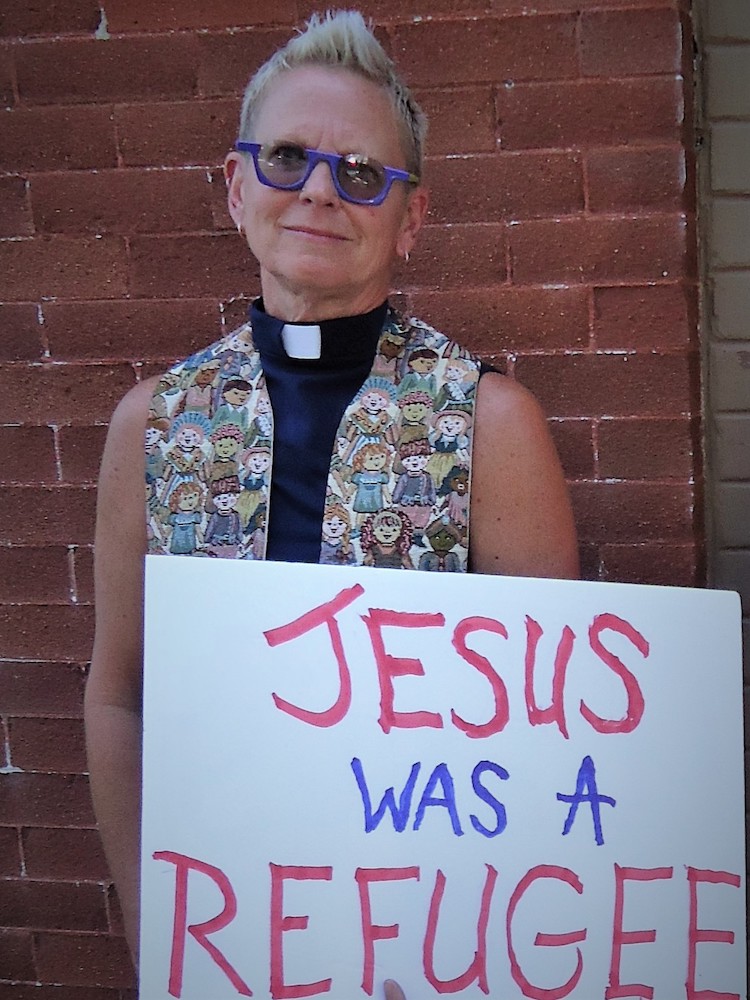
Statement of Faith, 2023, By Rev. Robin K. White
Graham’s Number* is so big that no one can begin to tell us how big it is. It is, however, only zero percent as big as infinity. God is Infinity.
Sometimes, when I try to articulate what I believe about God, I feel as though my head will explode. When I try to wrap my heart around who God is, I feel as though my heart will explode. And yet, expressing verbally and grappling consciously with our experience of God is what we are all called to do on occasion.
This I believe: From nothing, the Darkness cracks open—and the tense of the verb is always present—liberating fragments of Light. The cosmos interacts with itself, engaging with chaos, and creating order. In and throughout it all moves the unmistakable Energy of the Divine.
The Spirit of God Energy is what revels in the rotation of the earth, creating oceanic tides; separating night from day, water from dry land. This same Energy is in the mix as roots of new life unfurl from seeds. Buried deep in dark soil, they reach downward, cultivated by God, towards the nourishing depths; upward towards the light of new life.
The Spirit dances when a tree bursts into leaves. It is present when withered, fallen leaves swirl in an autumn breeze; rising, descending, rising, descending. The dance, the Dancer, persists as a bird emerges from its shell or a butterfly sets out on its odyssey from chrysalis to winged work of art.
This Sacred force pervades all labor and birth; the birth of the infant into the poverty of a makeshift shelter, and the birth of one born to sleep in a palace. This Divine Energy is present in each of us, as it was all of who Jesus was, and is, and will be.
It is the gentle compassion of the one who washes leprous feet and the one who bathes the wounds of the vagrant, stripped and abused and left for dead. It is found in the lifting up of the downtrodden, the gathering in of the outcast, the fervent welcoming of the foreigner, the loving embrace of the pariah. This is the Energy of justice and lovingkindness, reaching out to those who inhabit the margins.
This Sacred Energy is found in the gathering at table where food is shared; bread and wine, or coffee and doughnuts, a wedding feast or a meager meal consisting of leftovers. It permeates the atmosphere where hearts are opened, where strangers recognize one another as kin; where the ordinary becomes sacred; where sustenance becomes soul food.
Unconditional Loving Energy informs the sorrow of death. It is there in the agony of the mother who watches as her son, beaten and disrobed, arms outstretched on a cross, is tortured to death. It is in the grief of the parents whose son is gunned down as he reaches into his pocket for a box of Skittles; shot as he lifts his hands into the air as a symbol of surrender. It is there as the car mows down the innocent daughter marching peacefully in the street for social justice. This Energy of Love is present as a gentle teenager is racked, tied to a fencepost, and left to die alone in Laramie. It is even with the lifeless body of a toddler face down on a Turkish beach. It looks up and out from the eyes of the dying man, his breath forced out by a knee on his neck. God Energy is there, despite the powers of evil, even and always in the midst of the valley of the shadow of death.
The Divine Energy of Resurrection happens again and again in moments of hope. Resurrection occurs anew when sunlight streams into the tomb to reveal its emptiness. It becomes new life, as students organize against gun violence, as new activists resist bigotry and brutality, and as staunch, seasoned reformers stand up for basic human rights and dignity.
Resurrection happens when movements stirred by oppression and injustice renew their passion for life-giving resistance. Resurrection prevails in the persistence of prophetic witness as a response to discrimination, exploitation, and subjugation; when wounds are touched, when walls are transcended, when our doubts are transformed into tenacious faith. The power and mystery of Resurrection continues its odyssey on and on from each and every chrysalis.
Infinity God, “I Am Who I Am,” cannot be constrained by mere words, cannot be contained in a sepulcher, cannot be confined or controlled or, needless to say, charted by any human means. Often, the Spirit comes to us as commotion; tongues of fire; unpredictable, scorching, confounding. When we are hurled into totally unanticipated places of discomfort, divergence, discontent, and distress, the Spirit makes itself known, as thunderous wind or inaudible breath.
In those sacred moments we experience our deepest Grace and, if we ask for it fervently, we may, on our human fingers, begin to count out . . . even Graham’s Number.
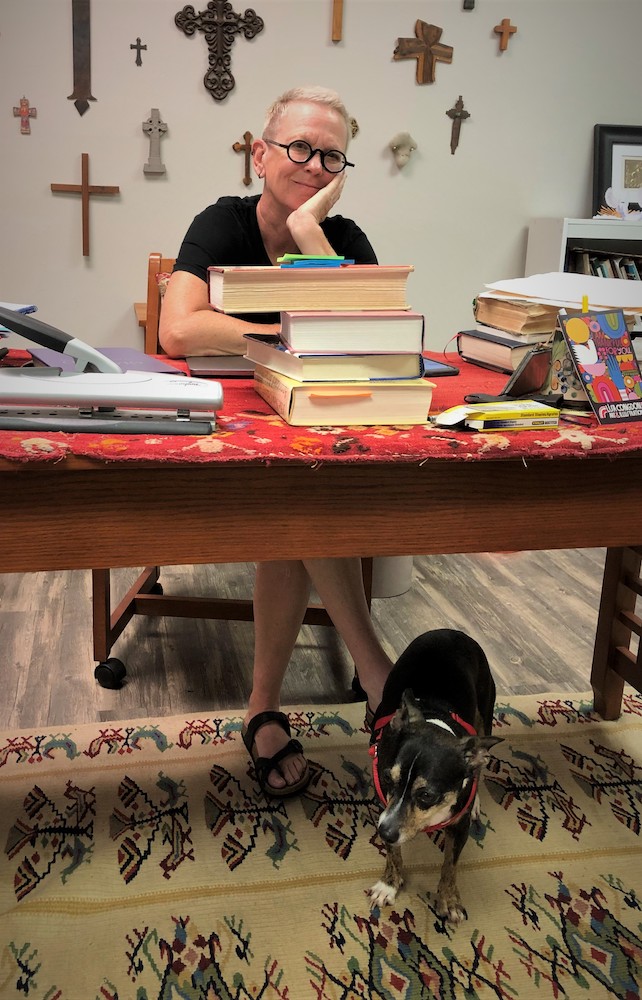
As I presented this new and somewhat divergent statement of faith to the southern, mostly conservative Presbytery in South Carolina, I fully expected resistance. To my great surprise, the only question raised had to do with a more comprehensive definition of who I believed Jesus to be. I knew the answer they wanted to hear, but I chose another angle and resisted conformity.
I told them a story about a children’s sermon I had presented years ago. “I showed the children a frisbee and asked them to tell me, without using their hands, how to throw the frisbee. They were not allowed to demonstrate the act but only permitted to use their words. They tried, but found it too difficult a task. I then explained to the children that the Divine One, throughout the ages, had tried and tried to tell us the about the love and grace of God but, finally, gave us Jesus as a way of showing us who God is.
Responding to the South Carolina Presbyter who seemed so concerned about “what I believed about Jesus,” I explained that this was who I believed Jesus to be, God’s way of showing us the attributes possessed by the Divine. The man then smiled and took his seat. When it was time to vote, I received a unanimous vote of “Yes,” followed by a standing ovation. My mind raced! What is this ensorcellment, I thought? Might it be the Holy Spirit?
Today, I am as befuddled as ever about what I believe. I refuse, however, to be part of a system that requires certainty. As Annie Lamont has said, “The opposite of faith is not doubt, but certainty. Certainty is missing the point entirely. Faith includes noticing the mess, the emptiness and discomfort, and letting it be there until some light returns. Faith also means reaching deeply within, for the sense one was born with, the sense, for example, to go for a walk.”
Or . . . to throw a frisbee.
![]()
*(From Wikipedia) “Graham’s Number” is an immense number that arose as an upper bound on the answer to a problem in the mathematical field of Ramsey theory. It is named after mathematician Ronald Graham, who used the number in conversations with popular science writer Martin Gardner as a simplified explanation of the upper bounds of the problem he was working on. In 1977, Gardner described the number in Scientific American, introducing it to the general public. At the time of its introduction, it was the largest specific positive integer ever to have been used in a published mathematical proof. The number was described in the 1980 Guinness Book of World Records, adding to its popular interest.
6 Comments
Diana
Robin, your story is amazing but the end is brilliant and even satisfies me, a nonbeliever. Thank you and bravo.
Robin White
Thank you, Diana!
Daniel James Dodson
Bat qol is Hebrew for “daughter of a voice” – (Since Malachi was written, “Daughter of Shekinah / Daughter of God”).
It is a term used in rabbinic literature that refers to a heavenly voice that announces (… in a whisper) divine reactions to certain events.
Thank you Reverend Robin, bat qol of 2024.
John Wescoat Sandlin
Well said, and appreciated.
Judy Pearce
I shared your Statement of Faith on FB and just received a noticde that it has been removed, accusing me of breaking cybersecurity rules. Go figure!
Eguru B-H
Hey, Judy! There was some sort of glitch on FB yesterday, and I had the same experience. Today, things seem back to what we now perceive as “normal.” Try it again? I did, and FB . . . relented. Thank you for reading us!